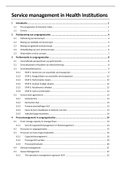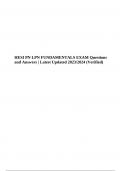Essay
BTEC Applied Science Unit 12A - Infectious and non-infectious diseases (Distinction)
- Institution
- PEARSON (PEARSON)
Exemplar assignment for Unit 12A of BTEC Level 3 Applied Science. This assignment was given a DISTINCTION. If you take anything from this assignment, please put it in your own words otherwise it will count as plagiarism. I hope it helps!
[Show more]












